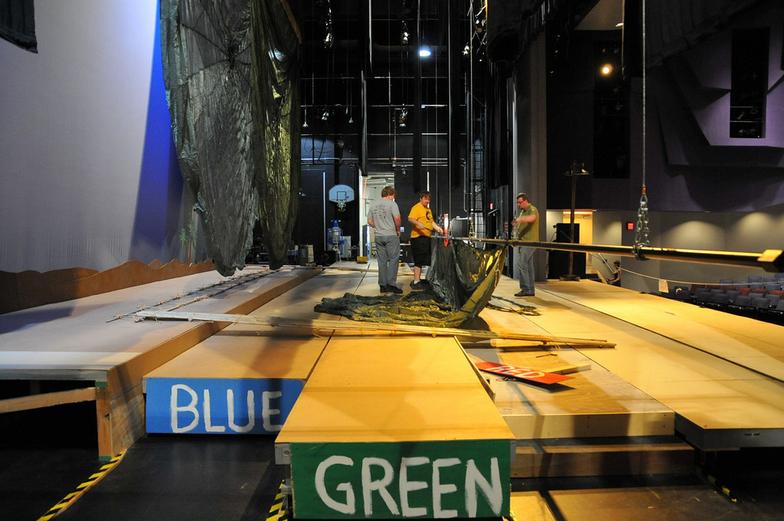Patricia Helsel
South Pacific: Working Process
Since our program has such a strong emphasis on the technical element, we experimented with the use of a "slip stage" wherein we were able to move seamlessly from scene to scene. While swift scene changes literally moved the action quickly, the scenic concept was very different than the original script's conventional requirements which included more extensive scene change music, elongated reprises, and extra verses of songs. One of the greatest challenges became that of blocking with the added dimension of movement of the set itself. This is an example of my blocking process, from paper to the final product.
My goal was to evoke a sense of excitement of personnel departing for battle. I established the convention of the “docks” being stage left. For the most part, folks are headed to the docks to report for duty or carry supplies. The scene is also a “farewell” to the nurses, who will remain on the island base, so there is some business with some characters who say, “goodbye.”
Departure Scene: "Farewell"
The slip stages slid along tracks parallel to the proscenium. They weighed enough to support several thousand pounds and were driven by steel cables; ultimately, a potentially dangerous feature for actors to navigate.
The greatest challenge was to avoid a moving slip stage, which was required to pass the entire width of the stage in order to load scenery for the final scene. With the exception of the final cross, the green portion of the stage had to be avoided entirely by actors.
View of Slip Stages from Stage Right.
Video demonstrating movement during "The Departure" (No actors were able to be blocked moving across the mid-section of the stage, so I created various levels of movement across the available space.





